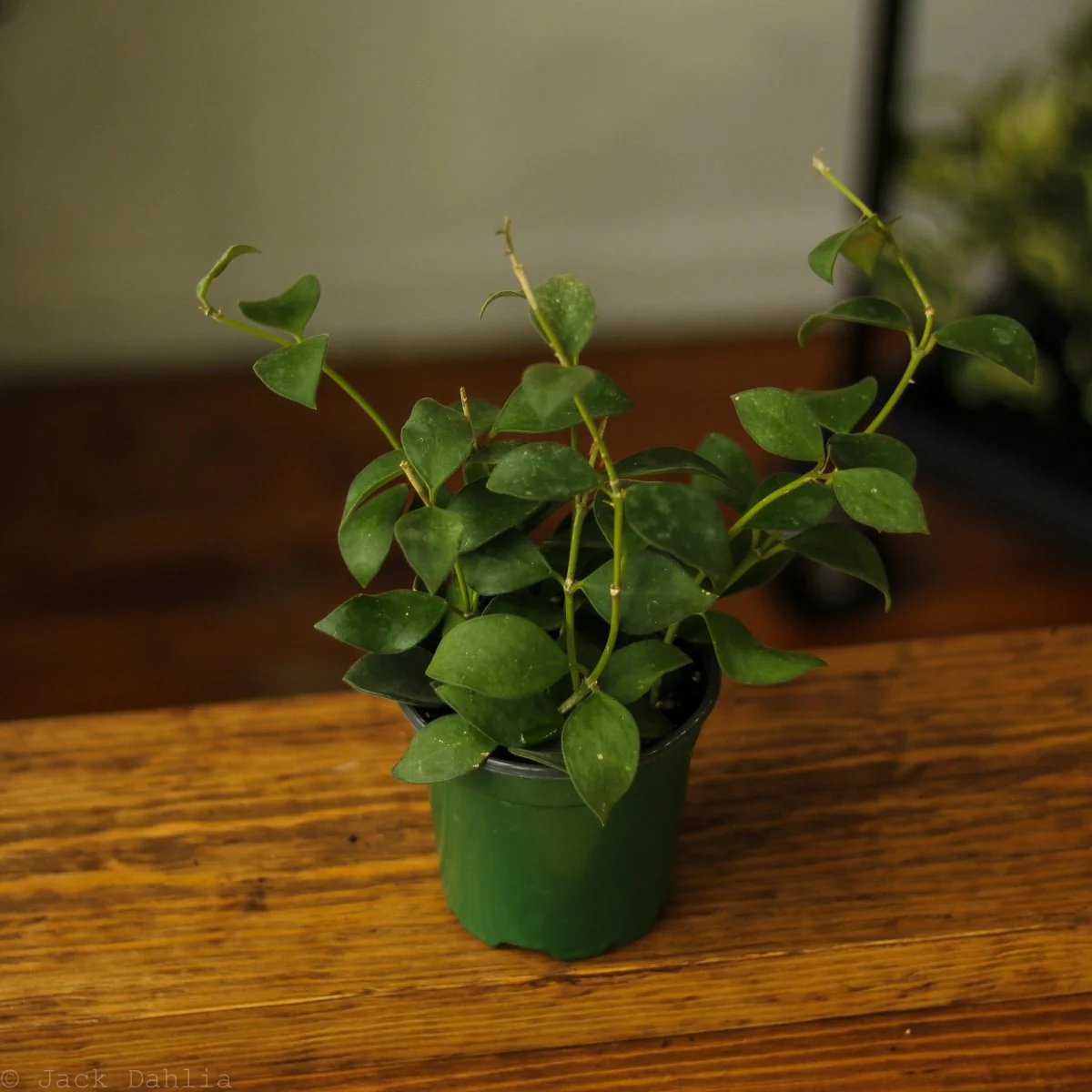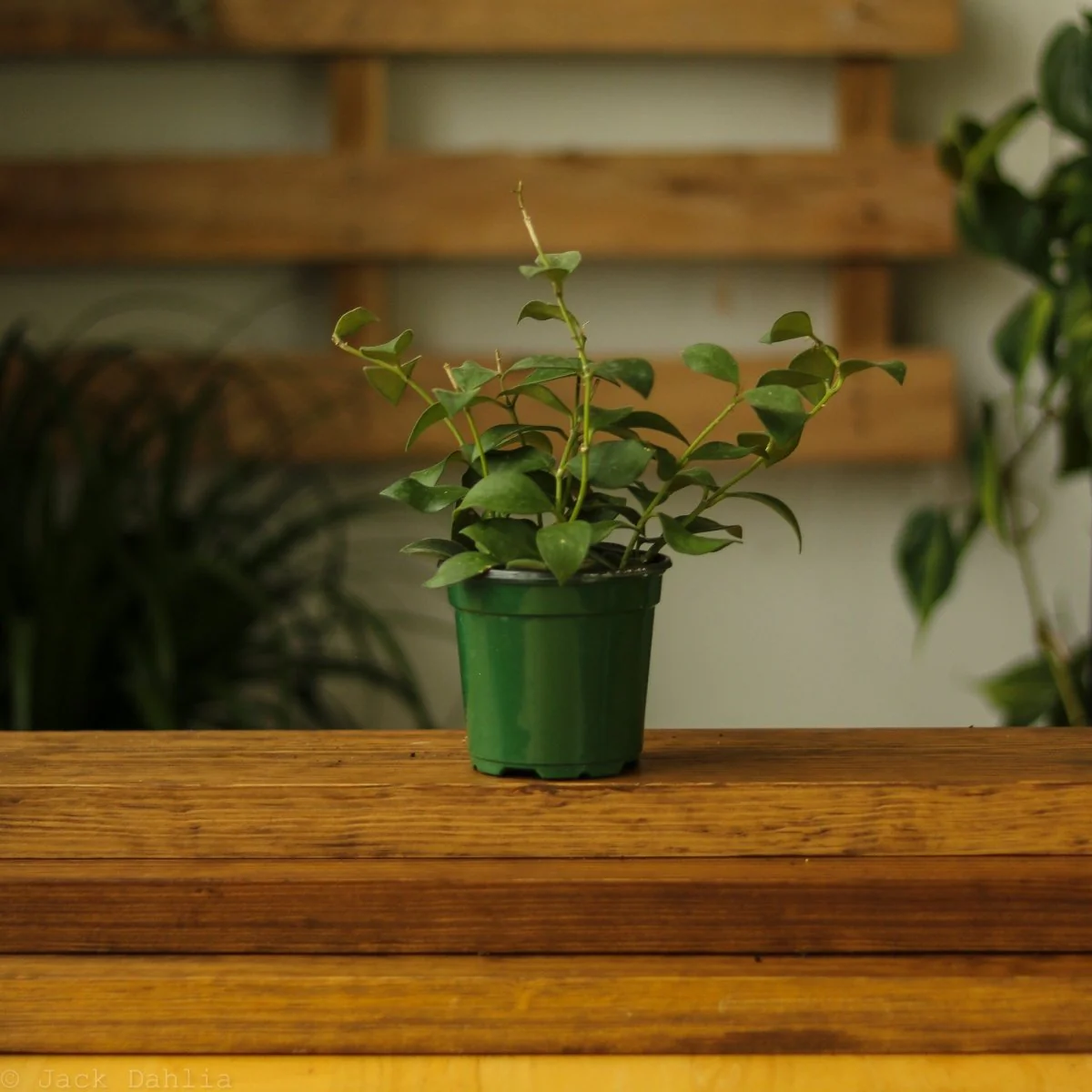Home
/
Hoya Pubera Nummularioides
-
Detail
Sometimes called the Hoya Picta or Hoya Picta “Nummularioides,” this uncommon variety is treasured by plant enthusiasts for its small green leaves and clove-scented blooms. The Hoya Pubera thrives in bright, indirect light and moderate humidity, making it a delightful addition to any indoor plant collection.
Why You’ll Love This Hoya
- Fragrant Blooms: When in flower, the leaves can emit a light, clove-like scent, adding a subtle aromatic touch to your space.
- Compact, Attractive Foliage: The petite, waxy leaves offer a charming look, whether trailing from a hanging basket or climbing a trellis.
- Easy-to-Train Vines: Its vines naturally seek out light, so you can guide them upward along a pole or wall for a vertical display.
- Pet-Safe Reputation: While Hoyas are generally non-toxic, we still recommend caution around children and pets.
Care Guide at a Glance
- Light: Prefers bright, indirect light. Avoid harsh, direct sun that can scorch the leaves.
- Water: Allow the top 1–2 inches of soil to dry before watering again. Avoid overwatering to prevent root rot. If leaves start shriveling or yellowing, try watering more frequently.
- Humidity: Enjoys average household humidity (50–75%). Tolerates lower levels but appreciates a bit of extra moisture in the air.
- Temperature: Thrives between 60–80°F (15–26°C). Keep away from extreme temperature fluctuations.
- Soil: Use a well-draining, lightweight mix like a standard cactus or succulent blend.
- Feeding: A half-strength, general-purpose liquid fertilizer once a month during spring and summer encourages healthy growth.
- Pruning: Trim away dead or discolored leaves to maintain a tidy appearance.
- Propagation: Stem cuttings root easily; place them in water or a soil mix and keep them warm.
Growth & Styling Tips
- Fast-Growing Vines: Compared to many other Hoyas, Hoya Pubera grows relatively quickly. Position it near a window with plenty of indirect light to encourage vigorous growth.
- Trailing or Climbing: Let it cascade from a hanging planter or guide its vines up a trellis or pole for an eye-catching vertical accent.
Common Pests & Precautions
- Watch for Insects: Aphids, spider mites, mealybugs, and scale can occasionally appear. Wipe leaves gently and treat with insecticidal soap if needed.
- Potential Toxicity: While Hoyas are widely regarded as non-toxic, some individuals or pets may have sensitivities. Keep plants out of reach of curious children and animals just to be safe.
Want to Master Hoya Care?
- Expert Hoya Tips: Check out our complete Hoya care guide to learn how to keep your plants thick, lush, and blooming year-round.
- Pet-Friendly Options: Looking for more houseplants safe for furry friends? Browse our guide to pet-friendly plants to create a vibrant, pet-safe home.



